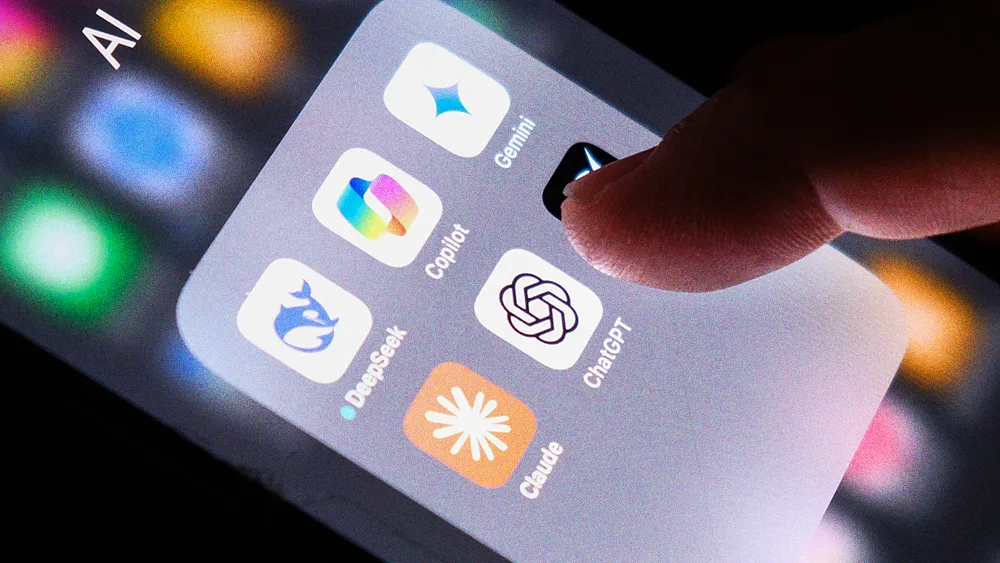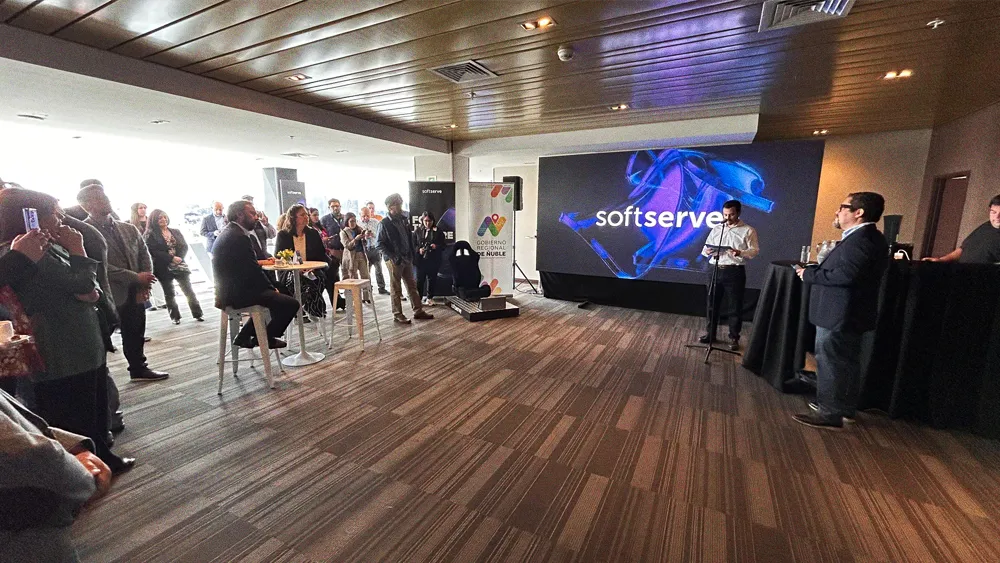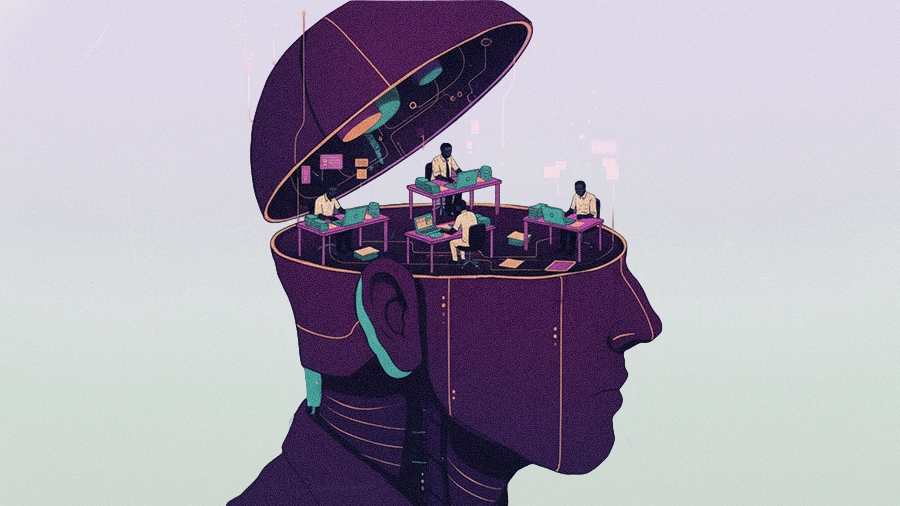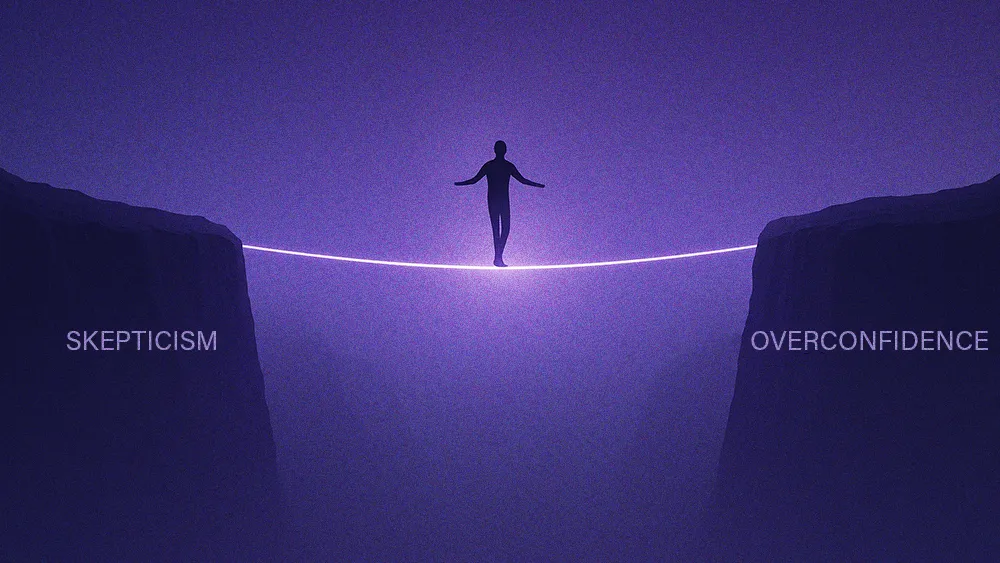How entry-level roles are an AI-augmented training ground for future leaders

Key Points
While a dominant narrative suggests AI will eliminate entry-level jobs, an alternative view frames the technology as a powerful career accelerator.
Amanda Colbert, CEO & Founder of Chariot Communications, argues that the real risk is not AI, but organizations failing to adapt and redesign junior roles for strategic thinking.
Colbert warns against the “brain rot” of over-relying on AI, stressing that tools are only effective when paired with critical thinking and human oversight.
The key is to create a symbiotic relationship where emerging talent and emerging technology can grow together, leading to a more capable workforce.
AI isn't going to replace entry-level roles, but organizations are at risk if they don't evolve those roles to take advantage of what AI can do. Entry level work is a training ground for future leaders, but it's clogged with repetitive, low-value tasks. AI can help clear the clutter and empower early-career employees to focus on the human skills that make them invaluable: empathy, collaboration, and problem-solving.

Amanda Colbert
CEO & Founder
Chariot Communications
While headlines warn that AI threatens entry-level jobs, that perspective overlooks a profound opportunity: AI not as a job destroyer, but as a powerful career-launching tool that could accelerate talent development faster than ever before. Instead of eliminating junior roles, AI can remove repetitive tasks and allow young professionals to focus on strategic thinking, problem solving, and communication skills. Success depends on leaders restructuring these roles to accelerate talent development and prepare employees to grow into future decision makers.
We spoke with Amanda Colbert, CEO & Founder of public relations consultancy Chariot Communications. Drawing on a career that spans from managing communications at tech giant Oracle to leading her own strategic advisory firm, Colbert argued that the real risk isn’t junior talent being replaced, but organizations failing to evolve in how they structure work and nurture talent. For her, the discussion must shift from fear to proactive design.
“AI isn’t going to replace entry-level roles, but organizations are at risk if they don’t evolve those roles to take advantage of what AI can do,” said Colbert. “Entry level work is a training ground for future leaders, but it’s clogged with repetitive, low-value tasks. AI can help clear the clutter and empower early-career employees to focus on the human skills that make them invaluable: empathy, collaboration, and problem-solving.” In order for that reality to take shape, leaders need to step up and facilitate the shift.
From button-pushing to business thinking: “Senior leadership must redesign roles so they focus less on button pushing and more on business thinking,” Colbert explained. “An entry-level hire can use AI to process data quickly, then spend more time interpreting the why behind the numbers and presenting strong recommendations to the team. That skill set grows with them and benefits the organization immediately.”
The new dynamic is already taking hold with the youngest members of the workforce, with 81% of Gen Z employees leaning on AI as a mentor for everything from professional analysis to guidance on major life decisions. But Colbert added a critical caveat: this technological coaching cannot replace the human element.
The irreplaceable manager: “Ultimately, managers cannot outsource their role and their coaching to AI because AI can’t offer promotions,” she stated. “AI does not have growth paths and it doesn’t offer the really tangible mentorship that Gen Z is looking for.” Without that human guidance, organizations risk losing the trust and loyalty of their youngest employees, undermining both retention and long-term leadership development.
Of course, this new paradigm is not without risk. Colbert warned against the intellectual laziness that can arise from an over-reliance on the technology. To use AI effectively is a skill in itself, one that requires critical thinking, domain expertise, and a healthy dose of skepticism.
A tool, not a toolbox: “AI is a hammer, and it’s a powerful one. But you still also need nails and a measuring tape and a saw,” Colbert said, stressing that AI is just one tool among many. “You can’t build a house with only a hammer.” Treating AI as the full solution, rather than part of a broader toolkit, risks narrowing both the skills employees develop and the quality of the work they produce.
The risk of brain rot: When AI-generated content is taken at face value instead of being verified and refined, the results lose originality and depth. “When you’re using AI for 100% of the task, 100% of the time, it just becomes an amalgamation of brown mush and inauthenticity,” she warned. “It’s brain rot. You can’t just accept the answer and regurgitate it back.”
The true potential of this moment lies in the symbiotic relationship between emerging talent and emerging technology. As generative AI scales, so too do the opportunities for those just beginning their careers. The key is to create an environment where both can grow together, with guardrails that ensure AI remains a launchpad, not just a shortcut.
“When you pair entry level talent with emerging tech, both of those sides get to grow together,” Colbert concluded. “So entry level employees are feeding the machine with context and then the machine is pushing them to think more strategically. This results in faster output, more strategic decisions, and a workforce that’s really trained to lead the world.”
When you pair entry level talent with emerging tech, both of those sides get to grow together. So entry level employees are feeding the machine with context and then the machine is pushing them to think more strategically. This results in faster output, more strategic decisions, and a workforce that's really trained to lead the world.

Amanda Colbert
CEO & Founder
Chariot Communications
When you pair entry level talent with emerging tech, both of those sides get to grow together. So entry level employees are feeding the machine with context and then the machine is pushing them to think more strategically. This results in faster output, more strategic decisions, and a workforce that's really trained to lead the world.

Amanda Colbert
CEO & Founder
Chariot Communications
Related articles
TL;DR
While a dominant narrative suggests AI will eliminate entry-level jobs, an alternative view frames the technology as a powerful career accelerator.
Amanda Colbert, CEO & Founder of Chariot Communications, argues that the real risk is not AI, but organizations failing to adapt and redesign junior roles for strategic thinking.
Colbert warns against the “brain rot” of over-relying on AI, stressing that tools are only effective when paired with critical thinking and human oversight.
The key is to create a symbiotic relationship where emerging talent and emerging technology can grow together, leading to a more capable workforce.

Amanda Colbert
Chariot Communications
CEO & Founder

CEO & Founder
While headlines warn that AI threatens entry-level jobs, that perspective overlooks a profound opportunity: AI not as a job destroyer, but as a powerful career-launching tool that could accelerate talent development faster than ever before. Instead of eliminating junior roles, AI can remove repetitive tasks and allow young professionals to focus on strategic thinking, problem solving, and communication skills. Success depends on leaders restructuring these roles to accelerate talent development and prepare employees to grow into future decision makers.
We spoke with Amanda Colbert, CEO & Founder of public relations consultancy Chariot Communications. Drawing on a career that spans from managing communications at tech giant Oracle to leading her own strategic advisory firm, Colbert argued that the real risk isn’t junior talent being replaced, but organizations failing to evolve in how they structure work and nurture talent. For her, the discussion must shift from fear to proactive design.
“AI isn’t going to replace entry-level roles, but organizations are at risk if they don’t evolve those roles to take advantage of what AI can do,” said Colbert. “Entry level work is a training ground for future leaders, but it’s clogged with repetitive, low-value tasks. AI can help clear the clutter and empower early-career employees to focus on the human skills that make them invaluable: empathy, collaboration, and problem-solving.” In order for that reality to take shape, leaders need to step up and facilitate the shift.
From button-pushing to business thinking: “Senior leadership must redesign roles so they focus less on button pushing and more on business thinking,” Colbert explained. “An entry-level hire can use AI to process data quickly, then spend more time interpreting the why behind the numbers and presenting strong recommendations to the team. That skill set grows with them and benefits the organization immediately.”
The new dynamic is already taking hold with the youngest members of the workforce, with 81% of Gen Z employees leaning on AI as a mentor for everything from professional analysis to guidance on major life decisions. But Colbert added a critical caveat: this technological coaching cannot replace the human element.
The irreplaceable manager: “Ultimately, managers cannot outsource their role and their coaching to AI because AI can’t offer promotions,” she stated. “AI does not have growth paths and it doesn’t offer the really tangible mentorship that Gen Z is looking for.” Without that human guidance, organizations risk losing the trust and loyalty of their youngest employees, undermining both retention and long-term leadership development.

Amanda Colbert
Chariot Communications
CEO & Founder

CEO & Founder
Of course, this new paradigm is not without risk. Colbert warned against the intellectual laziness that can arise from an over-reliance on the technology. To use AI effectively is a skill in itself, one that requires critical thinking, domain expertise, and a healthy dose of skepticism.
A tool, not a toolbox: “AI is a hammer, and it’s a powerful one. But you still also need nails and a measuring tape and a saw,” Colbert said, stressing that AI is just one tool among many. “You can’t build a house with only a hammer.” Treating AI as the full solution, rather than part of a broader toolkit, risks narrowing both the skills employees develop and the quality of the work they produce.
The risk of brain rot: When AI-generated content is taken at face value instead of being verified and refined, the results lose originality and depth. “When you’re using AI for 100% of the task, 100% of the time, it just becomes an amalgamation of brown mush and inauthenticity,” she warned. “It’s brain rot. You can’t just accept the answer and regurgitate it back.”
The true potential of this moment lies in the symbiotic relationship between emerging talent and emerging technology. As generative AI scales, so too do the opportunities for those just beginning their careers. The key is to create an environment where both can grow together, with guardrails that ensure AI remains a launchpad, not just a shortcut.
“When you pair entry level talent with emerging tech, both of those sides get to grow together,” Colbert concluded. “So entry level employees are feeding the machine with context and then the machine is pushing them to think more strategically. This results in faster output, more strategic decisions, and a workforce that’s really trained to lead the world.”




